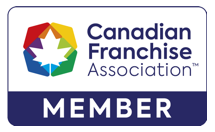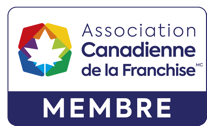A Canadian charity that intends to expand its operations in Canada can choose to structure itself as a head body with subordinate internal divisions operating under its governing documents.
The Canada Revenue Agency (“CRA”) has released guidance on head bodies and their internal divisions.
The CRA considers a head body to be “a registered charity that has authority over its internal divisions, and is resident in Canada, and was either created or established in Canada.”
The CRA considers an internal division to be “a branch, section, parish, congregation or other division of a registered charity that is established in Canada and that receives donations on its own behalf.” An internal division:
- Operates as an extension of and under the authority of its head body;
- Furthers the charitable purpose(s) of its head body;
- Is not a legal entity and does not have its own governing documents, but operates under the governing document of its head body; and,
- Is registered as a charity separately with the CRA but remains in a subordinate position to its head body.
General Benefits and Risks or Obstacles of a Head Body and Internal Division Structure:
General benefits include:
- Head bodies control and provide guidance on the governance matters of internal divisions, potentially acting as quality control for the brand.
- Head bodies exercise a measure of control over the charitable activities of internal divisions.
General risks or obstacles include:
- Potential liabilities of head bodies.
- Provincial registration requirements and fees for internal divisions.
- Each charity application of an internal division is subject to rejection (although the risk would be lowered once an initial template is established for internal divisions).
Registration/Application Process:
For the registration purposes of a head body with the CRA, an organization must:
- Be registered as a charity under the Income Tax Act.
- Have governing documents that show the charity has authority to do the following:
- create and close internal divisions;
- own the property of the internal division;
- appoint and control the board of the internal division;
- approve the budget of the internal division; and,
- exercise a measure of control over the activities of the internal division.
- Be approved by the CRA.
For the registration purposes of an internal division with the CRA:
- A head body must open a new pending RR account for an internal division.
- An internal division must submit an application for charitable registration with a letter of good standing from its head body detailing the relationship with the head body and the governing documents of the head body through such pending RR account.
- Be approved by the CRA.
Requirements after registration
After registration:
- Head bodies and internal divisions must file their own Registered Charity Information Returns and financial statements.
- Internal divisions must have the same fiscal year-end as its head body.
- Head bodies must maintain its registered status for its internal divisions to retain registered status.
- All official donation receipts and Registered Charity Information Return forms that are filed must include the registration number that the CRA issues.
- Head bodies must inform the Charities Directorate of any changes to their mode of operations or legal structures (e.g., changes in address, directors, legal or operating name, purposes, activities, or governing documents).
For more information about expanding the operations of a charity or head bodies and internal divisions, our experienced Business Law lawyers can assist you. To learn more about how we can assist you, please contact us online or by telephone at (416) 863-0125.
At Mills & Mills LLP, our lawyers regularly help clients with a wide range of legal matters including business law, real estate law, estate law, employment law, health law, and tax law. For over 130 years, we have earned a reputation amongst our peers and clients for quality of service and breadth of knowledge. Contact us online or at (416) 863-0125. The material provided through the Mills & Mills LLP website is for general information purposes only. It is not intended to provide legal advice or opinions of any kind.

 2 St Clair Ave West
2 St Clair Ave West


